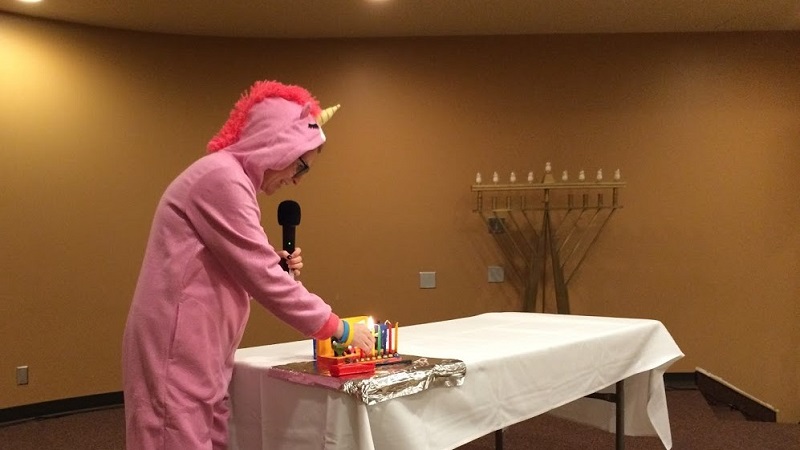While we’re not currently in the season of Hanukkah, a Mishnah that I love to teach about Hanukkah comes to mind as I read this week’s Torah portions. Hillel and Shammai, the great rabbinic sparring partners, have a debate about which way to light the candles. Should you add one each night or subtract one? At the same time, the Mishnah also introduces the concept that our rabbis taught that the mitzvah of Hanukkah is (for one person to light) one candle for the household. And for those who embellish, one candle for each and every member of the house. Then Hillel and Shammai get into the debate about eight candles and their significance.

This debate is about more than a ritual. It symbolizes our desire to assign deeper meaning to the ordinary objects we’re using. In the case of Hanukkah, the candles represent something bigger than just glowing light. They represent ourselves, our community, our world.
This week we read a double parshah, Acharei Mot-Kedoshim. Parshat Acharei Mot deals with what happens after Aaron’s sons have offered up “strange fire” to God and with certain forbidden relationships between human beings. The structure of this section of text pushes us to look at our relationships with both God and others and see the boundaries and intimacies of each relationship. Parshat Kedoshim deals with what is known as the “Holiness Code” that helps us to understand how we can walk in God’s ways and create a community of relationship and understanding.
In the context of these two Torah portions, we read about the way Aaron was supposed to prepare for Yom Kippur, specifically the public cleanse and purification for atonement. Aaron is to take a bull, a ram, and two goats, and wear (four) sacral linen garments. Leviticus Rabbah interprets each of these items and connects them to stories of Aaron’s past through his ancestors. The bull recalls the merit of Abraham’s offering when the messengers of God came to him. The ram is a reminder of Isaac’s readiness to be sacrificed at the Akeidah. The two goats symbolize the meal Jacob prepared for his father when he received his blessing instead of his brother. The four linen garments represent Sarah, Rebekah, Rachel, and Leah. In essence, the midrash reads this offering as a way for Aaron to enter into his holy work knowing that he carries on the legacy of his forebears.
This brings us back to Hanukkah and the idea that the objects aren’t just objects. They are us. This concept of hearkening back and assigning human identity is part of contemporary Judaism on other holidays as well. On Shabbat we can light two candles, as has become tradition, or we can light one candle for each person in our house. When we atone at Yom Kippur, we know that we stand in atonement with the merit of ourselves and also the merit of those who have come before us in all generations. What’s so beautiful about Judaism is that you can look at our observance and see a lot of traditions, or you can look at our traditions and see a lot of us.
– Rabbi Eve Posen
Source: You Are the Tradition – Parshat Acharei Mot-Kedoshim 5781



